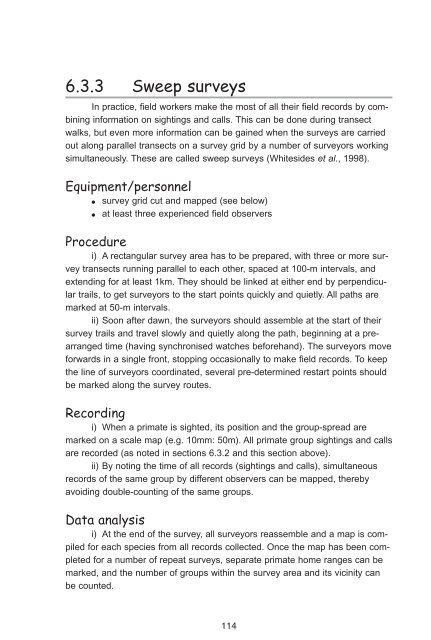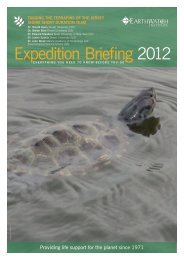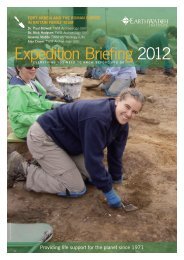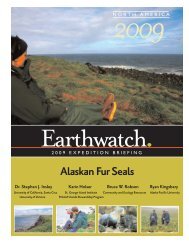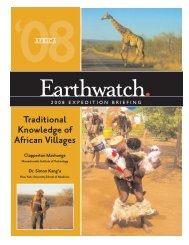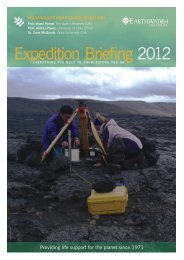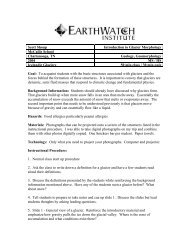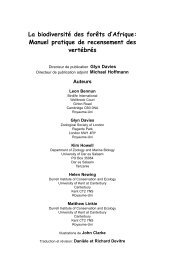African Forest Biodiversity - Earthwatch Institute
African Forest Biodiversity - Earthwatch Institute
African Forest Biodiversity - Earthwatch Institute
Create successful ePaper yourself
Turn your PDF publications into a flip-book with our unique Google optimized e-Paper software.
6.3.3 Sweep surveys<br />
In practice, field workers make the most of all their field records by combining<br />
information on sightings and calls. This can be done during transect<br />
walks, but even more information can be gained when the surveys are carried<br />
out along parallel transects on a survey grid by a number of surveyors working<br />
simultaneously. These are called sweep surveys (Whitesides et al., 1998).<br />
Equipment/personnel<br />
● survey grid cut and mapped (see below)<br />
● at least three experienced field observers<br />
Procedure<br />
i) A rectangular survey area has to be prepared, with three or more survey<br />
transects running parallel to each other, spaced at 100-m intervals, and<br />
extending for at least 1km. They should be linked at either end by perpendicular<br />
trails, to get surveyors to the start points quickly and quietly. All paths are<br />
marked at 50-m intervals.<br />
ii) Soon after dawn, the surveyors should assemble at the start of their<br />
survey trails and travel slowly and quietly along the path, beginning at a prearranged<br />
time (having synchronised watches beforehand). The surveyors move<br />
forwards in a single front, stopping occasionally to make field records. To keep<br />
the line of surveyors coordinated, several pre-determined restart points should<br />
be marked along the survey routes.<br />
Recording<br />
i) When a primate is sighted, its position and the group-spread are<br />
marked on a scale map (e.g. 10mm: 50m). All primate group sightings and calls<br />
are recorded (as noted in sections 6.3.2 and this section above).<br />
ii) By noting the time of all records (sightings and calls), simultaneous<br />
records of the same group by different observers can be mapped, thereby<br />
avoiding double-counting of the same groups.<br />
Data analysis<br />
i) At the end of the survey, all surveyors reassemble and a map is compiled<br />
for each species from all records collected. Once the map has been completed<br />
for a number of repeat surveys, separate primate home ranges can be<br />
marked, and the number of groups within the survey area and its vicinity can<br />
be counted.<br />
114


